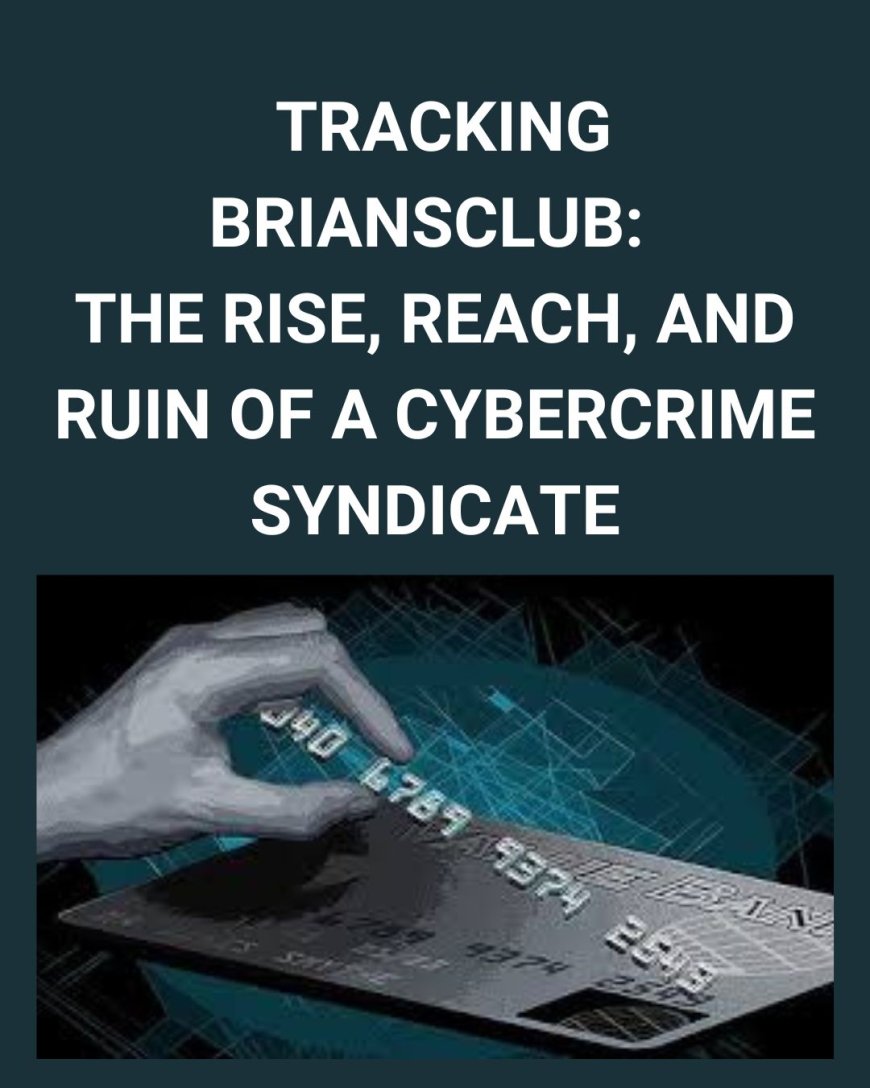Tracking Briansclub: The Rise, Reach, and Ruin of a Cybercrime Syndicate
Uncover the full story of Briansclub, the dark web marketplace that sold millions of stolen credit cards. From its operation tactics to its takedown.

In the ever-evolving digital landscape, cybercrime continues to grow in scale and sophistication. One of the most infamous names in this underground world is Brianscluba dark web marketplace that sold stolen credit and debit card information to criminals worldwide. Its rise and eventual downfall is a case study in how data theft fuels global fraud and why digital defense must be a priority.
This article traces the full story of Briansclubhow it worked, how it was dismantled, and what that means for your online security today.
What Made Briansclub a Major Threat?
Unlike obscure forums used by hackers, Briansclub operated more like a digital retail platformexcept its inventory consisted of stolen financial data. With a well-structured interface, the platform allowed users to:
-
Filter cards by bank, country, and expiration
-
Browse by card type (Visa, MasterCard, etc.)
-
Pay with cryptocurrency
-
Purchase in bulk with discounted pricing
This professionalism attracted buyers from around the globe, turning Briansclub into one of the largest underground markets for compromised payment data.
The Supply Chain of Stolen Data
The success of Briansclub depended on a steady inflow of freshly stolen card data. The platform aggregated this data from various cybercriminal sources, including:
-
Malware installed on point-of-sale (POS) devices
-
ATM skimming tools
-
Phishing emails and fake payment portals
-
Data breaches from retail and hospitality giants
Once obtained, this informationoften referred to as dumps or CVVswas sold to other criminals for use in fraud, card cloning, or online theft.
The Role of Cryptocurrency in Obscuring Transactions
One of the most critical components of Briansclubs longevity was its use of cryptocurrency. Payments were made in Bitcoin, ensuring:
-
Anonymity for buyers and sellers
-
Difficulty in tracking transaction history
-
No central authority to block or reverse payments
Despite being publicly recorded on the blockchain, Bitcoin transactions were masked further using mixing services, allowing cybercriminals to launder their funds before use.
The 2019 Leak: When the Curtain Fell
Briansclub operated for years without major interference until 2019, when its entire database was leaked to cybersecurity experts and law enforcement. The breach included:
-
26+ million credit and debit card records
-
Account details of buyers and sellers
-
Internal transaction logs and admin notes
This leak was a turning point. Banks began deactivating cards en masse, cybersecurity firms warned consumers, and law enforcement ramped up their efforts against similar platforms.
How the Cybersecurity Industry Responded
The exposure of Briansclub forced banks, payment processors, and cyber defense teams to act fast. Key responses included:
-
Massive reissuance of credit and debit cards
-
Introduction of machine learning fraud detection systems
-
Enhanced encryption protocols for online transactions
-
Cross-border collaboration between law enforcement agencies
While the breach was damaging, it served as a wake-up call for institutions that had underestimated the scale of dark web threats.
Lessons from the Fall of Brian's Club
Briansclubs story offers several important cybersecurity insights:
-
Cybercrime is highly organized: Platforms like Briansclub are run like professional businesses.
-
Anonymity tools are a double-edged sword: Technologies like crypto and VPNs protect both users and criminals.
-
Data breaches are global threats: A single leak can impact users in hundreds of countries.
-
Security is an ongoing process: constant updates, audits, and employee training are essential.
How Everyday Users Can Stay Protected
Even though you may never visit the dark web, your data can still end up there if you're not careful. Heres what individuals should do:
-
Use strong, unique passwords for every service
-
Enable two-factor authentication on all critical accounts
-
Avoid suspicious links or attachments in emails
-
Monitor financial transactions and credit reports
-
Use a password manager to securely store login details
Why Businesses Must Prioritize Data Protection
Many of the records sold on Briansclub were taken from businesses that failed to secure their customer data. To prevent future breaches, companies should:
-
Implement end-to-end encryption across all transactions
-
Restrict access to sensitive systems using role-based controls
-
Schedule routine cybersecurity audits
-
Train staff in digital hygiene and threat recognition
-
Maintain an incident response strategy for data leaks
Cybersecurity isnt just a tech issueits a business imperative.
Are Briansclub-Style Sites Still Active?
Though Briansclub was taken down, copycat platforms continue to surface. Many now use encrypted messaging apps, invite-only marketplaces, or even decentralized platforms to evade law enforcement.
Whats changed is that cybersecurity experts are better equipped today. Thanks to incidents like the Briansclub leak, detection tools have improved and collaboration across borders has intensified.
Final Thoughts
The story of Briansclub is a powerful reminder of how fragile digital security can be. Its scale, professionalism, and eventual breach highlighted just how interconnected cybercrime has become.
For businesses and consumers alike, the key takeaway is clear: proactive defense is the only defense. In an era where data is currency, every action you take toward protecting it matters.






























